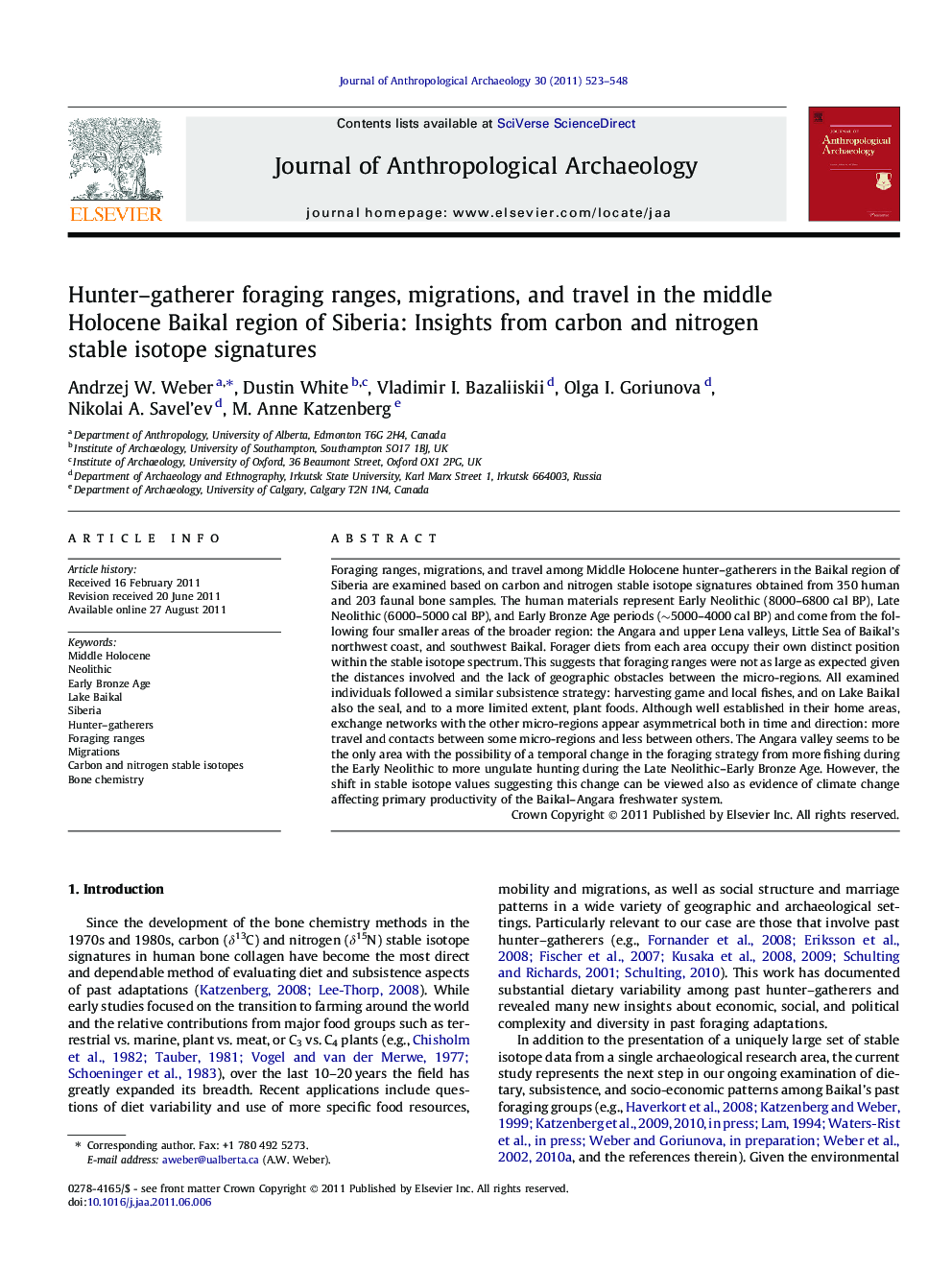| کد مقاله | کد نشریه | سال انتشار | مقاله انگلیسی | نسخه تمام متن |
|---|---|---|---|---|
| 1035003 | 1483858 | 2011 | 26 صفحه PDF | دانلود رایگان |

Foraging ranges, migrations, and travel among Middle Holocene hunter–gatherers in the Baikal region of Siberia are examined based on carbon and nitrogen stable isotope signatures obtained from 350 human and 203 faunal bone samples. The human materials represent Early Neolithic (8000–6800 cal BP), Late Neolithic (6000–5000 cal BP), and Early Bronze Age periods (∼5000–4000 cal BP) and come from the following four smaller areas of the broader region: the Angara and upper Lena valleys, Little Sea of Baikal’s northwest coast, and southwest Baikal. Forager diets from each area occupy their own distinct position within the stable isotope spectrum. This suggests that foraging ranges were not as large as expected given the distances involved and the lack of geographic obstacles between the micro-regions. All examined individuals followed a similar subsistence strategy: harvesting game and local fishes, and on Lake Baikal also the seal, and to a more limited extent, plant foods. Although well established in their home areas, exchange networks with the other micro-regions appear asymmetrical both in time and direction: more travel and contacts between some micro-regions and less between others. The Angara valley seems to be the only area with the possibility of a temporal change in the foraging strategy from more fishing during the Early Neolithic to more ungulate hunting during the Late Neolithic–Early Bronze Age. However, the shift in stable isotope values suggesting this change can be viewed also as evidence of climate change affecting primary productivity of the Baikal–Angara freshwater system.
► Middle Holocene hunter–gatherers of the Baikal region, Siberia.
► Hunter–gatherer culture change, demography, subsistence, diet, and foraging ranges.
► Hunter–gatherer interactions with the natural environment.
► Hunter–gatherer social and political organization.
► Evolutionary archaeology, behavioral archaeology, foraging theory, and culture transmission theory.
Journal: Journal of Anthropological Archaeology - Volume 30, Issue 4, December 2011, Pages 523–548